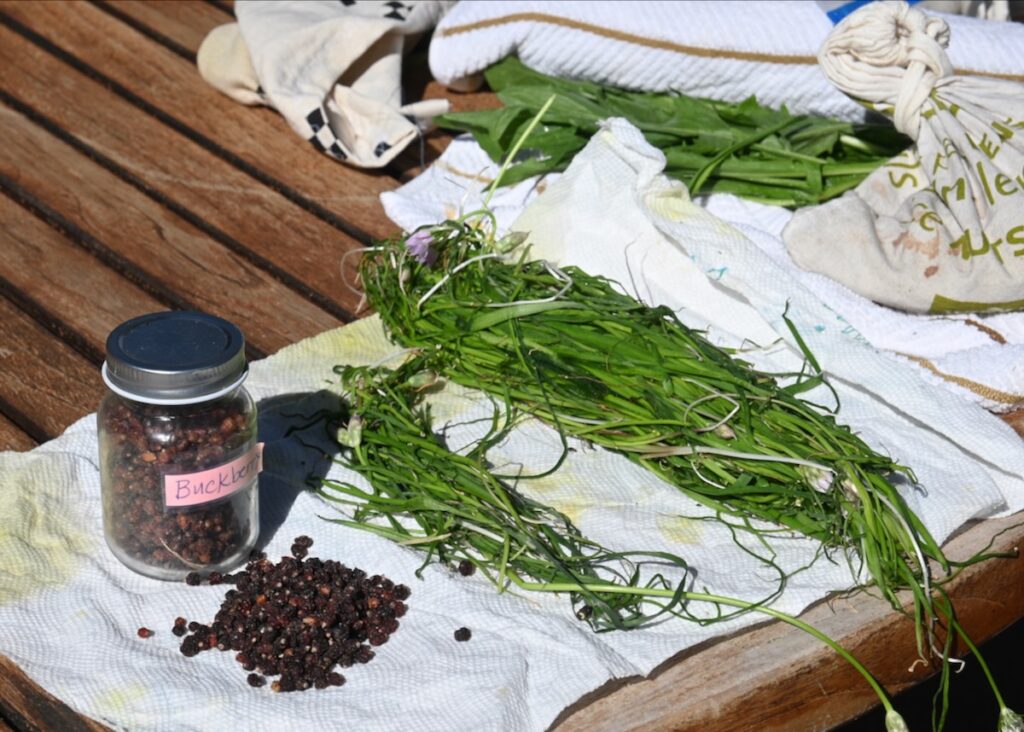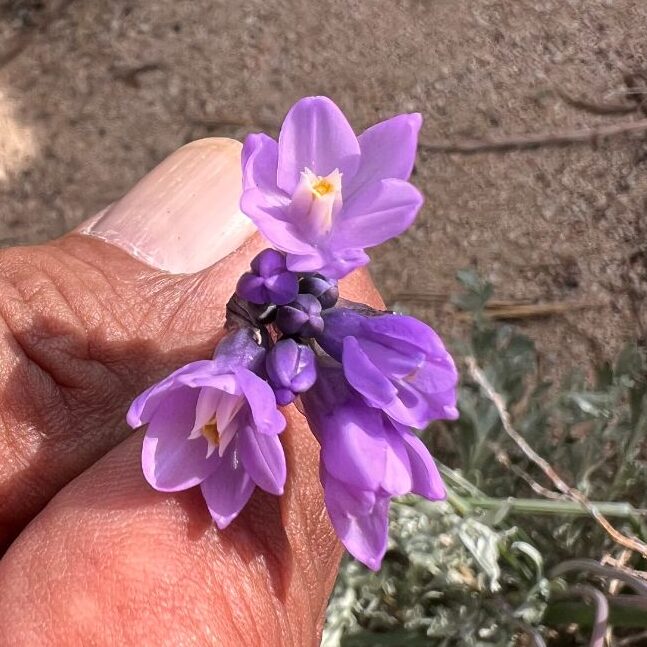On a grill outside of the dining hall at UNR’s Lake Tahoe Campus on a recent June evening, a special array of meats and fish sizzled: beef, bison, rabbit, pheasant, venison, and cui-ui, an endangered sucker fish from Pyramid Lake. At a second grill, Nick Wright of the Pyramid Lake Paiute Tribe roasted numerous large filets of Lahontan cutthroat trout, sprinkled with lemon pepper seasoning.
The event—a traditional foods potluck dinner—was held as part of the first Nevada Tribal Foods Summit, a conference held at UNR Lake Tahoe on May 31-June 2, on the traditional lands of the Washoe people. As good smells filled the cool evening air, people chatted as they prepared traditional drinks, salads, chokecherry pudding, and more. After a giving of thanks, participants introduced the food items they had prepared, and the eating began.
The cui-ui, in particular, was a first for many. The cui-ui is a culturally important species to the Pyramid Lake Paiute Tribe, whose traditional name Cuiyui Ticutta means “cui-ui eaters.” This fish was placed on the Federal endangered species list in 1966, and the tribe has only recently been able to obtain some of these fish for cultural use.
“It’s a crazy breakthrough,” said Nick Wright. “Ever since I was a kid growing up I would hear about cui-ui but never get to try one or even see it. It’s pretty big. And having it up here to have everyone else try is quite the opportunity for everyone.”

In addition to the potluck dinner, the Nevada Tribal Food Summit consisted of three days of presentations and discussions centered around the theme of tribal food sovereignty, or the right and ability of tribal nations and people to determine how their food is produced and distributed, including growing traditional foods.
Sessions included discussions about what tribal food sovereignty looks like in Nevada, examples from elsewhere in Indian Country, how to develop tribal policies, the science of food, local food sovereignty projects, USDA grant programs, and more. Indigenous and locally grown foods are important because they are nutritious, adapted to local climates, and culturally important.
The idea for the Summit came about largely as a result of the COVID pandemic when supply-chain issues and stay-at-home orders made it more difficult for many people to access fresh, healthy food, said event organizer Vicki Hebb, Business Operations Manager for the University of Nevada, Reno Extension and member of the Native Climate team. Hebb is a member of the Cheyenne River Sioux Tribe.
“During COVID we saw the need for food sovereignty, and then with food sovereignty comes the need to identify Indigenous foods,” Hebb said. “The Nevada tribes have been so active in this area that we thought we need to do a food summit.”
Participants came from nearby Nevada Tribes, including Pyramid Lake, the Walker River Paiute Tribe, Duck Water, Southfork, and others. The sessions were moderated by Staci Emm, Professor and Extension Educator, also of the Native Climate team, and a member of the Yerington Paiute Tribe.
“Nevada Extension Tribal Programs has focused on agriculture production for many years, and now is expanding to incorporate the entire food system and what that can look like on Nevada reservations,” said Emm. “An important part of a Nevada tribal food systems includes the traditional and medicinal plants including how they were used historically, and how they can be used today.”

Although enthusiasm for Indigenous foods was high at the conference, many plants used for traditional food or medicine have been suffering in recent years due in part to long-term droughts linked to climate change. Many things have changed, says Melanie Smokey of the Yomba-Shoshone and Washoe Tribes.
The Reese River, which crosses the valley near the Yomba-Shoshone reservation, has been running completely dry in recent years. Smokey recalls hearing elders talk about her people seeing the first non-native people traveling through by boat – something that would no longer be possible today. Plant populations have been affected by the dry conditions as well.
“There are plants even up in the mountains where there is usually more moisture that I’ve gone up there to harvest and they are completely gone,” Smokey said. “They completely dried out and just went away.”


She has encountered other challenges in harvesting traditional foods. Collecting foods like chokecherries and elderberries often requires travel to remote locations along rugged roads. “Checkerboard” land ownership patterns in the region make it difficult for tribal members to access plants that grow on privately owned lands. Herbicides sprayed by government agencies can contaminate plants and make them inedible and unusable for traditional food or cultural purposes like the willow used for basket weaving. And there are many plants that Native people don’t know the English names for, or vice versa, so it is more challenging to talk about changes that they observe.
But the value in learning and sharing knowledge and traditions around nature and plants runs deep, says Smokey. She remembers going out with her great-grandmothers, who were basket weavers and would pray and sing songs when they were out searching for plants for food and weaving. These songs and traditions are important.
“Our plants teach us about relationships,” Smokey said. “Even stinging nettle. I still go back and harvest, even though I know I’m going to get stung. But it’s because it has that wealth of benefits that comes from harvesting it, and the more that you’re around it, the more your body just kind of gets used to it. So I can pick it by hand, the young ones. When they get older I don’t mess with it because the stalks get too (stinging), but that’s how people are…a lot of people will bite you. We have a lot of people that are like stinging nettle and you just approach them with care, right? And it’s those people that usually end up being, like, this incredible wealth. So, nature and plants teach us all the time.”


Traditional Food Potluck: Photo Gallery
Photos by Kelsey Fitzgerald and Vanesa de la Cruz Pavas


















